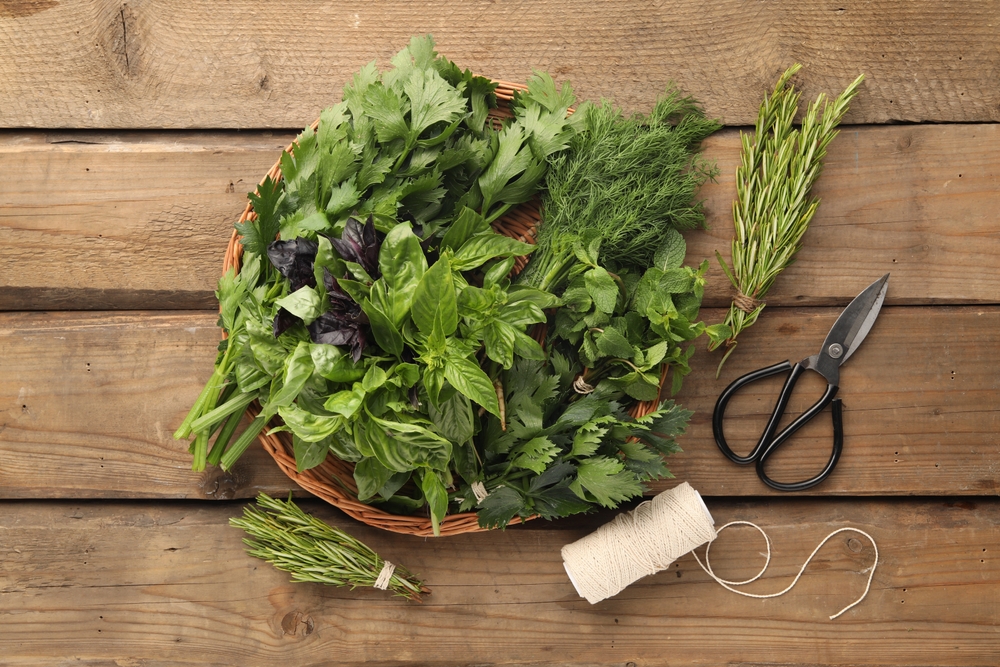That $50 jar of ashwagandha powder sitting in your pantry. The rhodiola capsules you diligently swallow each morning. The expensive mushroom coffee blend promising superhuman stress resilience. The adaptogen market has exploded into a multi-billion dollar industry, with certain herbs achieving almost mythical status and price points to match.
But what if some of the most effective stress-managing herbs weren’t the ones getting all the attention and marketing dollars? What if equally powerful plant allies have been overlooked in the rush to commercialize a select few botanical superstars?
Let’s explore some lesser-known herbs that work similarly to popular adaptogens but haven’t yet been hyped into household names or premium-priced commodities.
What makes an herb truly adaptogenic
Before diving into the alternatives, let’s clarify what we’re actually looking for. The term “adaptogen” was first used in the 1940s to describe substances that increase the body’s non-specific resistance to stress. For an herb to qualify as a true adaptogen, it should meet three criteria:
It must be non-specific, helping the body resist a wide range of stressors, whether physical, chemical, or biological.
It should normalize body functions, regardless of the direction of change from physiological norms caused by the stressor.
It must be non-toxic when used in appropriate doses and not significantly disrupt normal body functions.
While marketing has stretched the term to include almost any herb with health benefits, these original criteria help us identify herbs with genuinely adaptogenic properties, regardless of their commercial popularity.
Codonopsis, the gentle ginseng alternative
While Asian and American ginsengs dominate the adaptogen market, their lesser-known relative Codonopsis pilosula offers similar benefits with distinct advantages.
Often called “poor man’s ginseng” or dang shen in Traditional Chinese Medicine, codonopsis root supports energy and immune function without the stimulating effects that make ginseng problematic for some people. This makes it suitable for daily, long-term use without risks of insomnia or agitation.
Research shows codonopsis contains polysaccharides and saponins that boost immunity, enhance physical endurance, and improve oxygen utilization. These properties help the body adapt to both physical and mental stressors without overtaxing the system.
Unlike the intense, warming energy of ginsengs, codonopsis provides gentle, sustainable support particularly beneficial during recovery from illness or prolonged stress. It works especially well for those with deficient conditions characterized by fatigue, weak digestion, and compromised immunity.
Perhaps its greatest advantage lies in sustainability and affordability. Unlike true ginseng, which takes years to mature and faces overharvesting concerns, codonopsis grows relatively quickly and remains reasonably priced, making it an economically and ecologically superior choice for many ginseng users.
Albizzia, the happiness bark hiding in plain sight
While everyone talks about ashwagandha for stress, the bark and flowers of the Albizzia julibrissin tree offer potent mood support without the marketing hype.
Known as “he huan pi” or “collective happiness bark” in Chinese medicine, albizzia has been used for centuries to relieve anxiety, lift mood, and ease emotional constraint. Modern research confirms its effects on neurotransmitter systems involved in mood regulation.
The flavonoids and saponins in albizzia demonstrate both anti-anxiety and antidepressant activities in research models. Unlike many mood medications that work on single pathways, albizzia appears to modulate multiple neurotransmitter systems, helping the body adapt to various types of emotional and psychological stress.
What makes albizzia particularly valuable is its gentle effect on both the mind and spirit aspects of emotional wellbeing. It helps ease the tight sensation of anxiety in the chest while simultaneously lifting mood without causing agitation or interfering with sleep.
Despite growing throughout much of the United States as the mimosa or “silk tree” with distinctive pink powder-puff flowers, most Americans have no idea they’re walking past a powerful mood-supporting herb. This lack of recognition has kept it affordable and accessible for those who know its benefits.
Shatavari, the female tonic more effective than maca
While maca root gets marketed heavily for hormonal balance, the Ayurvedic herb shatavari (Asparagus racemosus) offers comprehensive female hormonal support with more extensive research backing its effectiveness.
Shatavari’s name translates to “she who possesses a hundred husbands,” reflecting its traditional use as a female reproductive tonic. Its adaptogenic effects specifically target the endocrine system, helping women adapt to hormonal fluctuations throughout various life stages.
The steroidal saponins in shatavari exhibit phytoestrogenic activity that helps modulate estrogen levels, making it useful for both insufficient and excessive estrogen states. This bidirectional action represents the true normalizing effect expected from adaptogens.
Beyond reproductive support, shatavari enhances immune function, improves digestive absorption, and contains powerful antioxidants that protect cells from stress-induced damage. These broader benefits make it a more comprehensive adaptogen than maca, which primarily affects energy and libido.
Though less aggressively marketed than maca or vitex in the Western market, shatavari has thousands of years of documented use in Ayurvedic medicine. Its effectiveness has kept it a central female tonic despite changing medical paradigms and trends.
Tulsi, the sacred stress-reliever more potent than trendy CBD
As CBD dominates conversations about natural stress relief, the ancient herb tulsi, or holy basil (Ocimum sanctum), offers comparable benefits with a stronger research foundation and lower cost.
Revered in India as a sacred plant for over 3,000 years, tulsi demonstrates remarkable adaptogenic properties. It helps regulate cortisol levels, supports adrenal function, and modulates the stress response through multiple pathways, including influence on neurotransmitter activity.
The unique combination of eugenol, rosmarinic acid, and other compounds in tulsi provides both immediate and long-term stress protection. It simultaneously calms the nervous system acutely while building resistance to future stressors, a dual action that many trending supplements lack.
What makes tulsi particularly noteworthy is its impressive scientific validation. With hundreds of published studies examining its effects on everything from psychological stress to metabolic syndrome, tulsi has stronger evidence supporting its adaptogenic properties than many newer, trendier options.
Despite these benefits, tulsi remains relatively affordable, widely available, and simple to grow at home, making it accessible to almost anyone seeking stress support without premium pricing or regulatory concerns that accompany options like CBD.
American skullcap, the nervous system tonic stronger than lion’s mane
While lion’s mane mushroom gets substantial attention for neural support, the North American herb skullcap (Scutellaria lateriflora) offers potent neuroprotective and nervous system balancing effects without the high price tag.
Skullcap’s flavonoid compounds like baicalin and wogonin demonstrate remarkable neuroprotective properties, shielding nerve cells from oxidative damage while supporting healthy GABA activity in the brain. This gives skullcap the rare ability to both calm an overactive nervous system and strengthen a depleted one.
This bidirectional action makes skullcap a true adaptogen for the nervous system, helping it recover from and build resistance to various stressors. Whether the stress manifests as anxiety, tension, or post-stress depletion, skullcap helps restore balanced function.
Unlike many commercial adaptogens that require weeks to show effects, skullcap provides both immediate calming benefits and long-term nervous system resilience when used consistently. This dual timeframe of action makes it particularly valuable for those dealing with ongoing stress.
Despite growing wild across much of North America and having centuries of use among indigenous peoples and traditional herbalists, skullcap hasn’t captured market attention like imported mushrooms. This oversight keeps its price reasonable while offering comparable or superior neuro-supportive benefits.
Finding quality in the overlooked corners
These lesser-hyped adaptogens offer something increasingly rare in the wellness world, effective options without inflated prices driven by marketing rather than superior efficacy. But finding quality sources requires some knowledge.
Look for herbs from companies that specialize in herbalism rather than trend-focused wellness brands. Established herbal companies typically source botanicals based on traditional effectiveness rather than marketability, often resulting in better quality control for less commercial herbs.
Consider traditional forms over novel delivery methods. While adaptogen-infused seltzers, chocolates, and beauty products proliferate, traditional preparations like tinctures, decoctions, and simple capsules typically provide better value and efficacy.
Start with single herbs rather than blends. Although adaptogen blends promise comprehensive support, they often contain minimal effective amounts of multiple herbs. Beginning with individual herbs helps you identify which ones work best for your body before investing in combinations.
The most effective herbal approach often involves looking beyond what’s trending on social media to what has sustained use across generations. These overlooked adaptogens demonstrate that some of the most powerful plant allies aren’t necessarily the ones with the biggest marketing budgets or celebrity endorsements.
By exploring these less-hyped alternatives, you might discover that the adaptogenic support you’ve been seeking has been hiding in plain sight all along, often at a fraction of the cost of their trendier counterparts.















